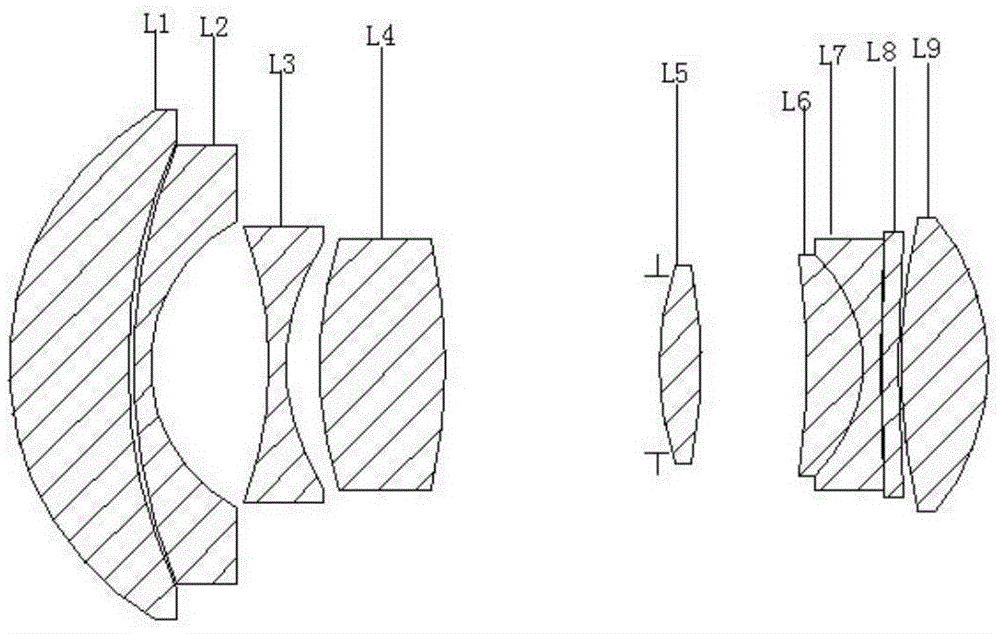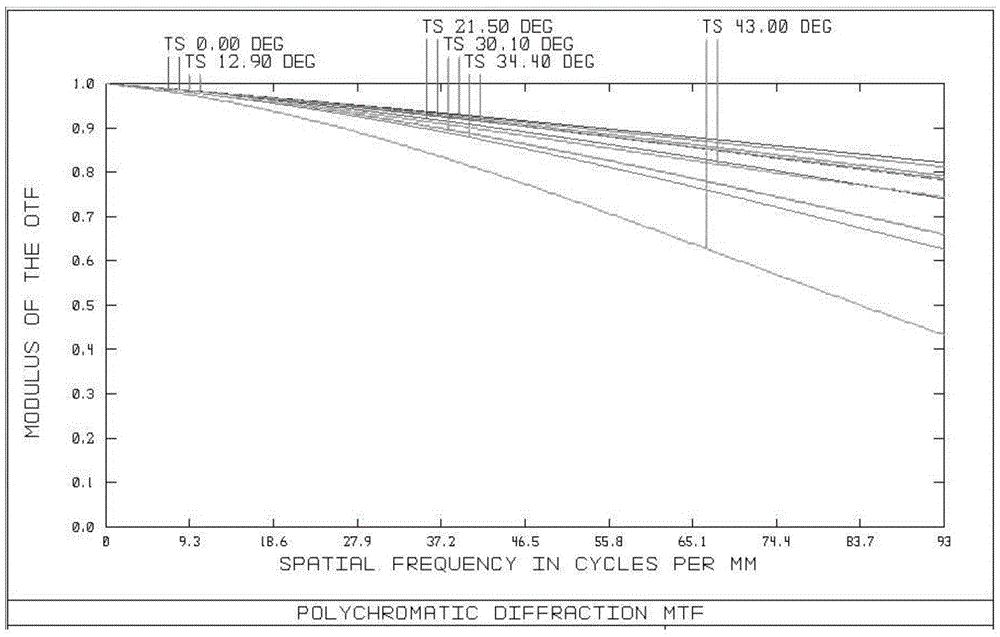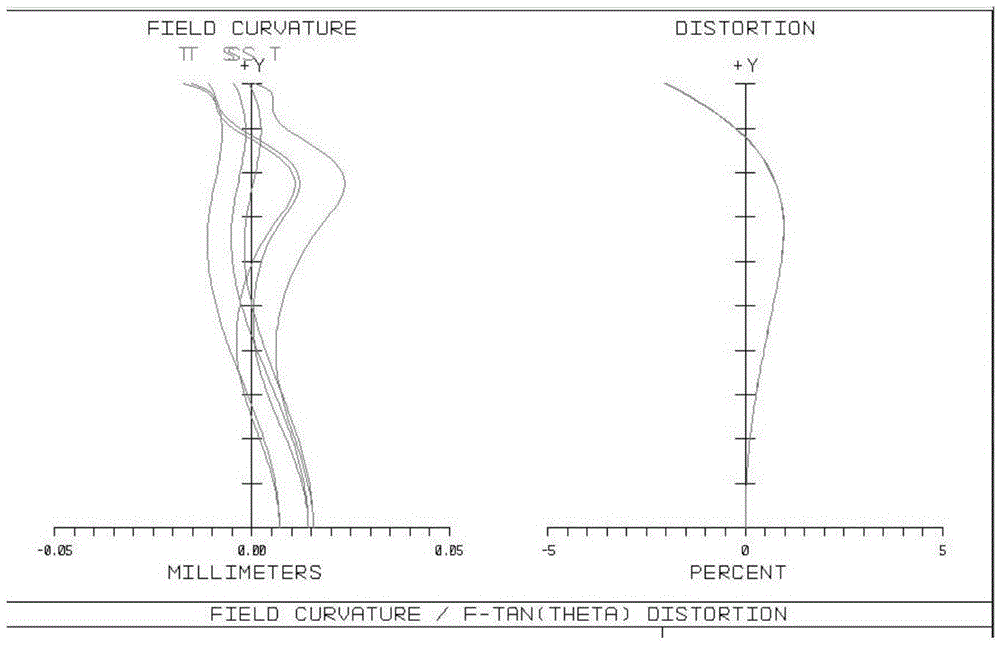Camera lens for digital projector
A technology for digital projectors and lenses, applied in the field of lenses, can solve the problems of low image quality, large volume, adding lenses, etc., so as to achieve the effect of not reducing edge image quality, high energy utilization, and good image contrast.
- Summary
- Abstract
- Description
- Claims
- Application Information
AI Technical Summary
Problems solved by technology
Method used
Image
Examples
Embodiment Construction
[0030] now attached Figures 1 to 5 The present invention is further elaborated:
[0031] A lens for a digital projector, the projection lens adopts a reverse telephoto optical system scheme, the lens materials of the first lens L1 and the eighth lens L8 are both E48R aspherical lenses, and the first lens L1 is an aspheric lens for correction For various monochromatic aberrations and distortions in the off-axis field of view, the eighth lens L8 is used to correct various on-axis monochromatic aberrations.
[0032] In order to ensure the realization of the wide angle and realize the long rear working distance at the same time, the focal power distribution is as follows, the combined focal length of the first lens L1 to the fourth lens L4 is f 1-4 , the combined focal length of the fifth lens L5 to the ninth lens L9 is f 5-9 , then the optical system needs to satisfy the condition: |0.751-4 / f 5-9 |1-4 / f 5-9 |≥0.95, the system cannot guarantee a long enough back working dis...
PUM
 Login to view more
Login to view more Abstract
Description
Claims
Application Information
 Login to view more
Login to view more - R&D Engineer
- R&D Manager
- IP Professional
- Industry Leading Data Capabilities
- Powerful AI technology
- Patent DNA Extraction
Browse by: Latest US Patents, China's latest patents, Technical Efficacy Thesaurus, Application Domain, Technology Topic.
© 2024 PatSnap. All rights reserved.Legal|Privacy policy|Modern Slavery Act Transparency Statement|Sitemap



